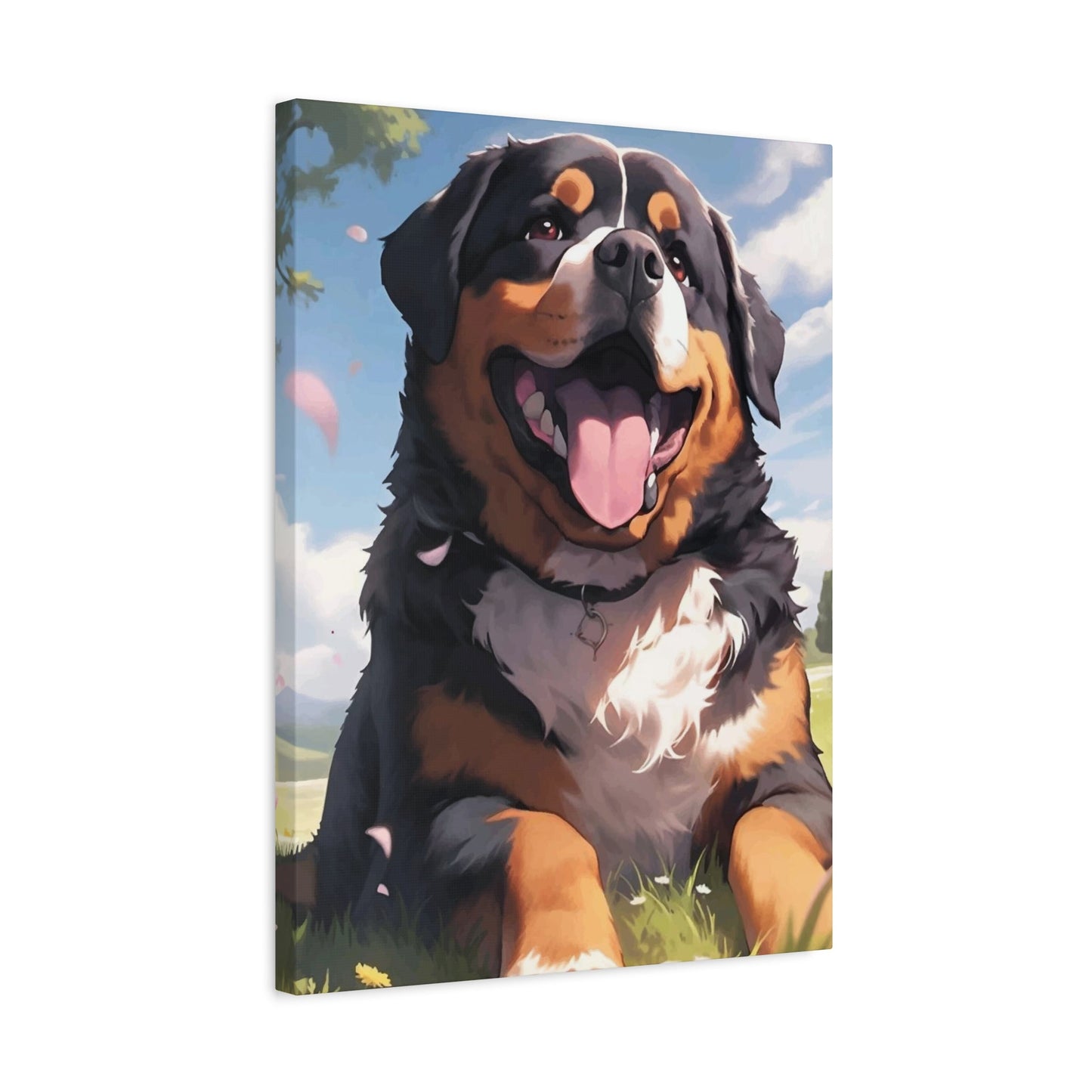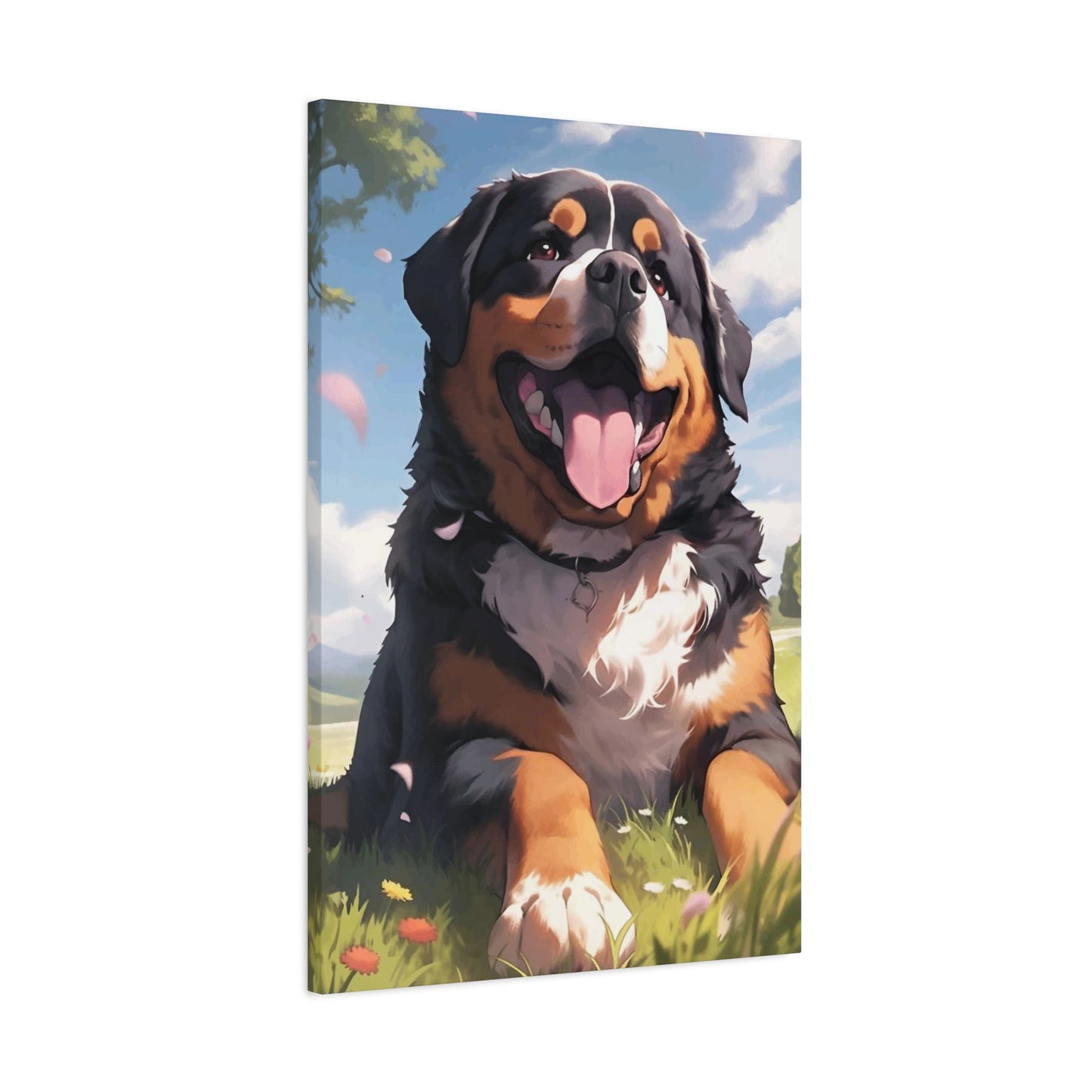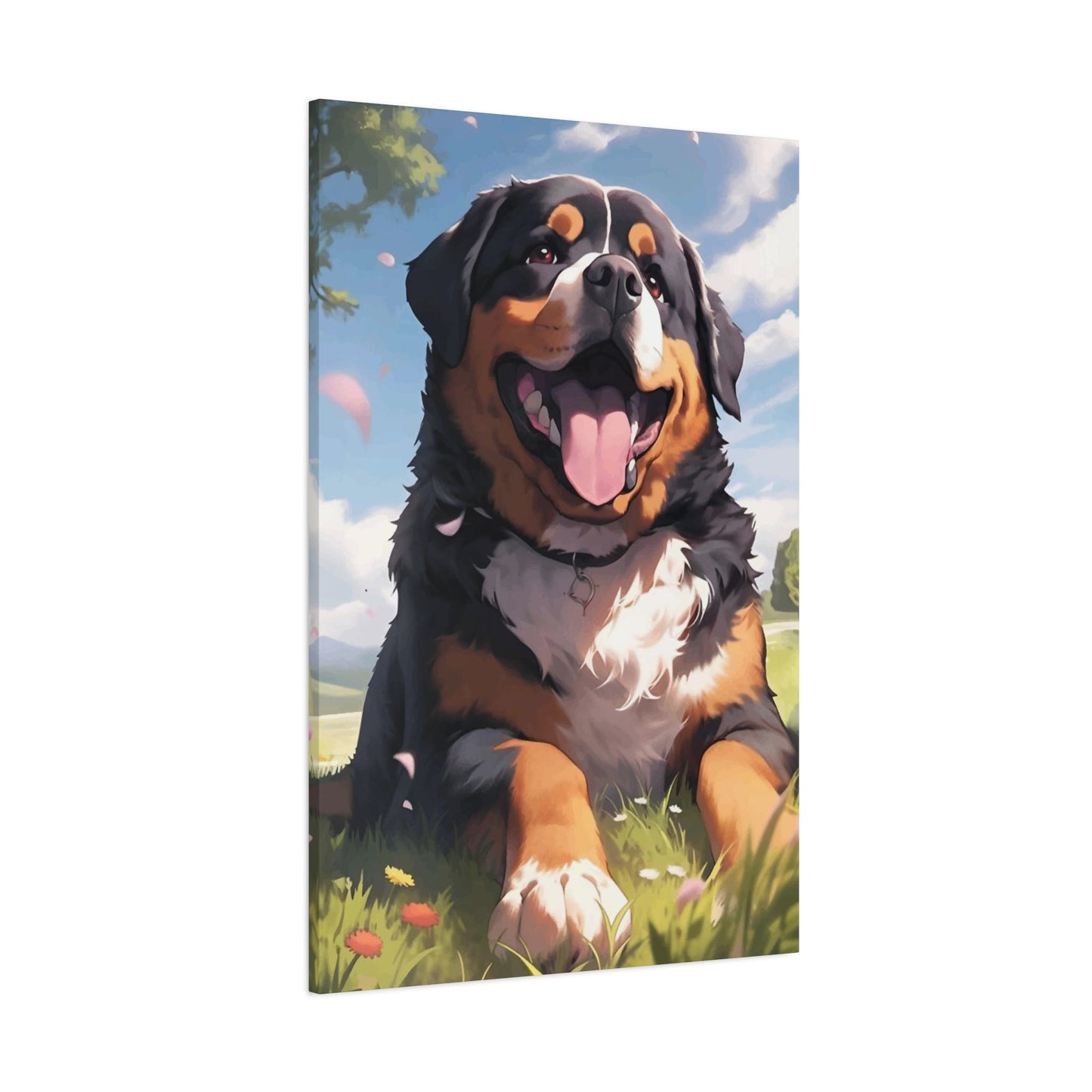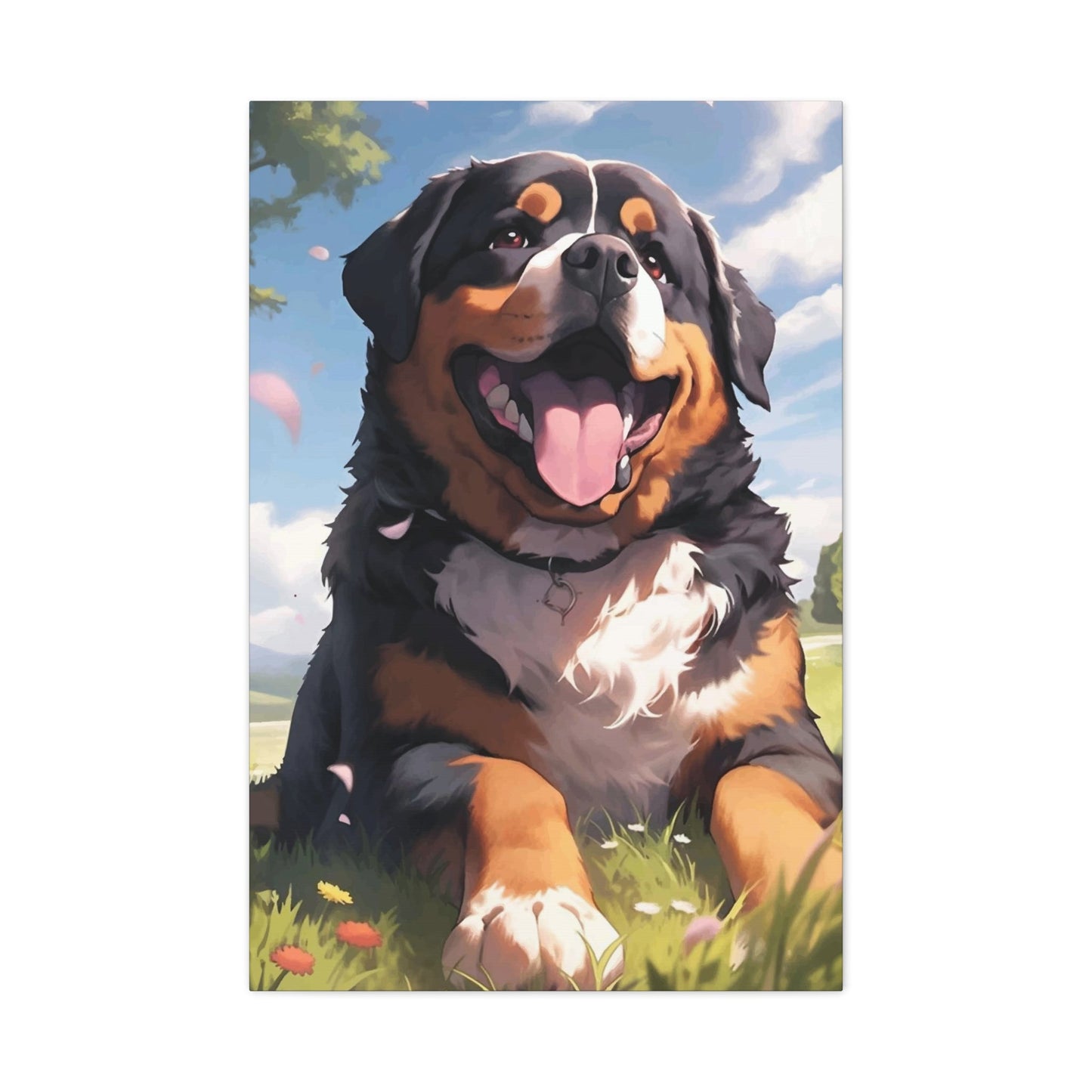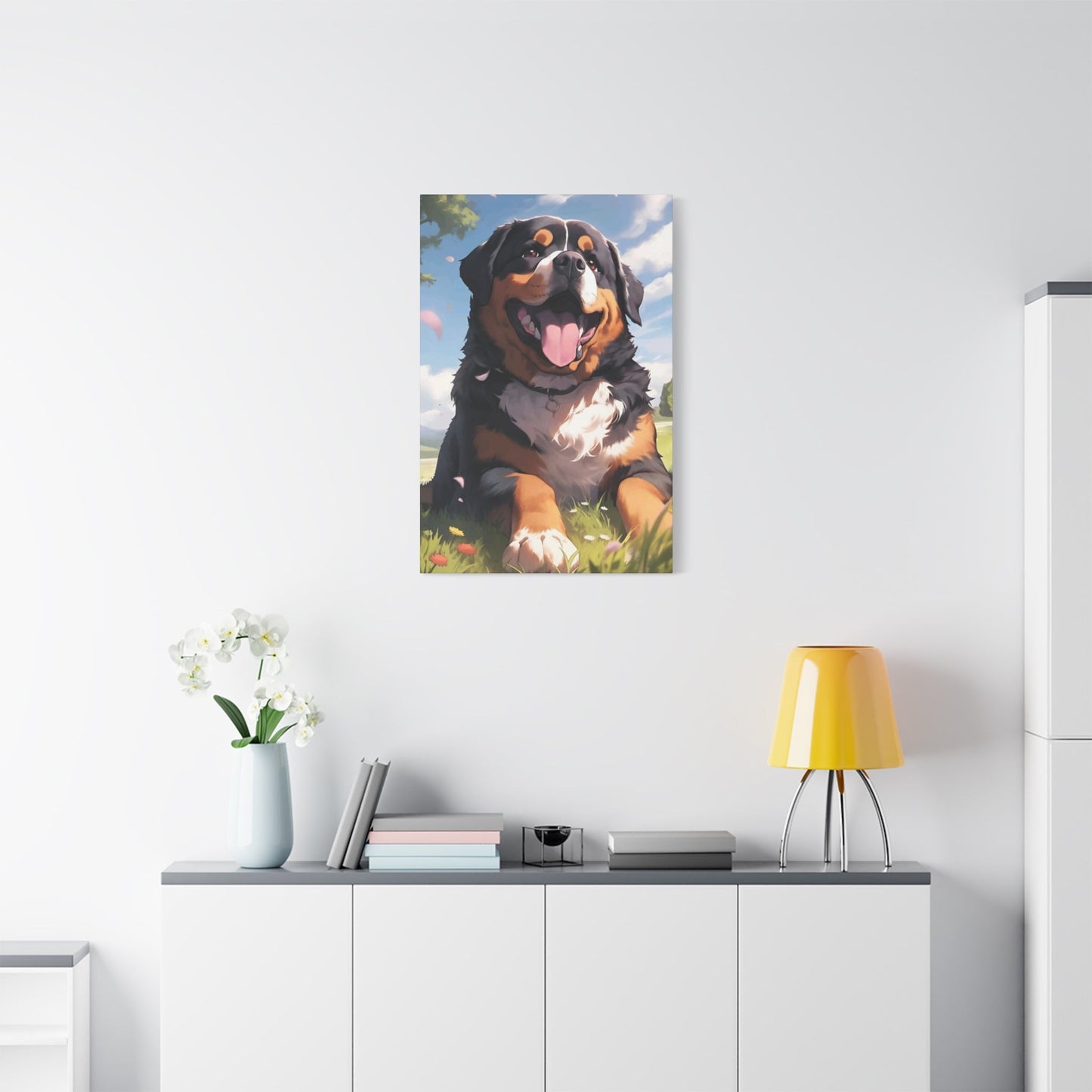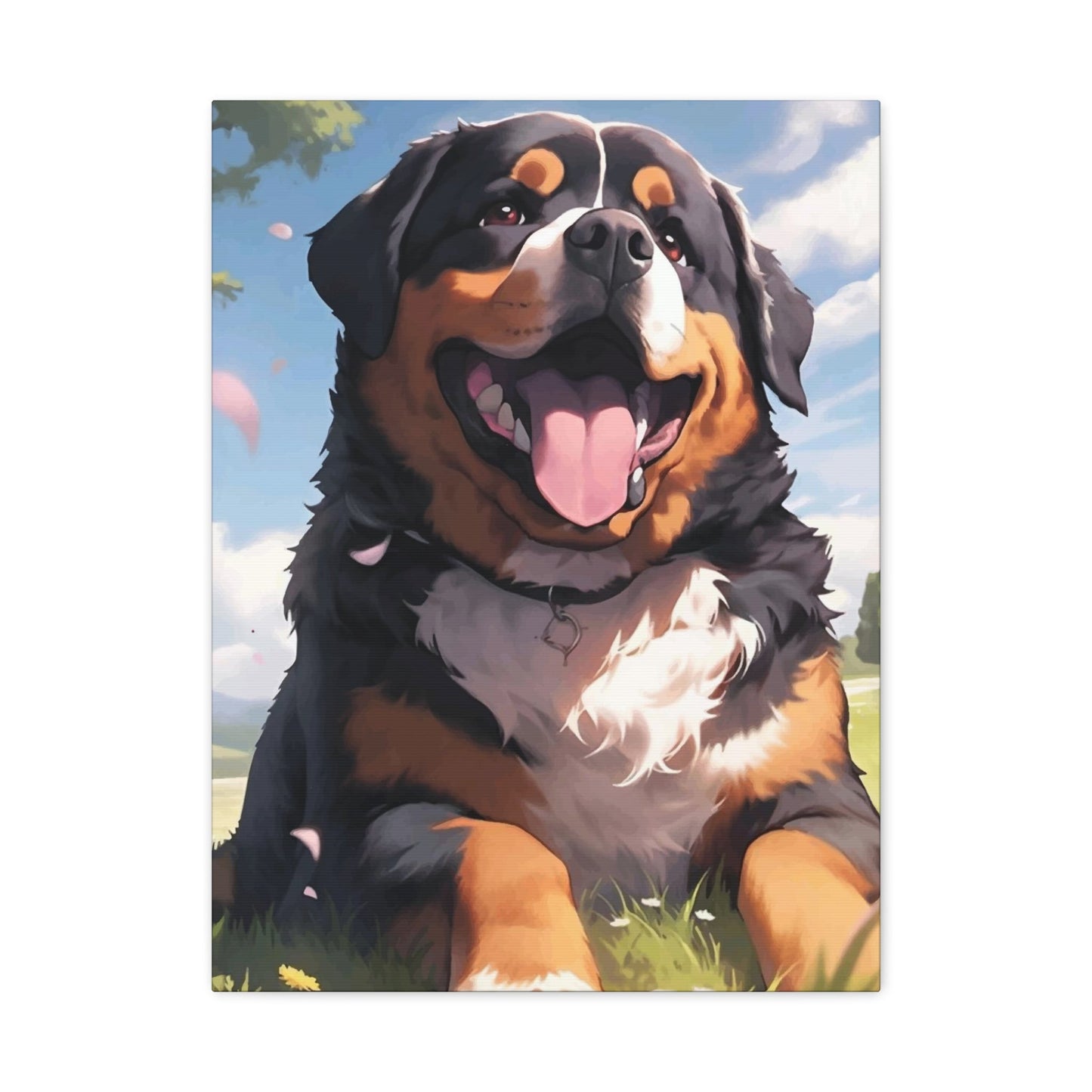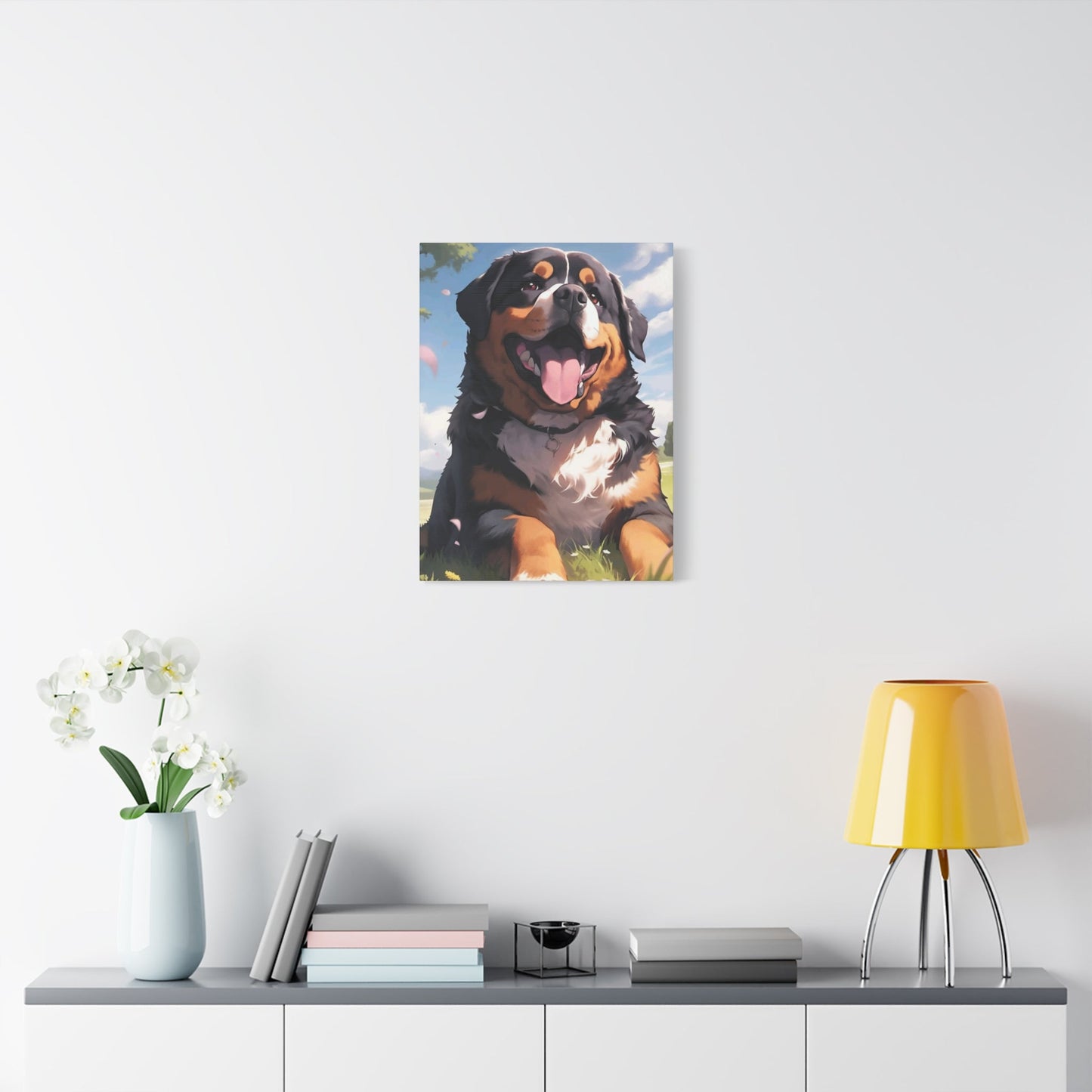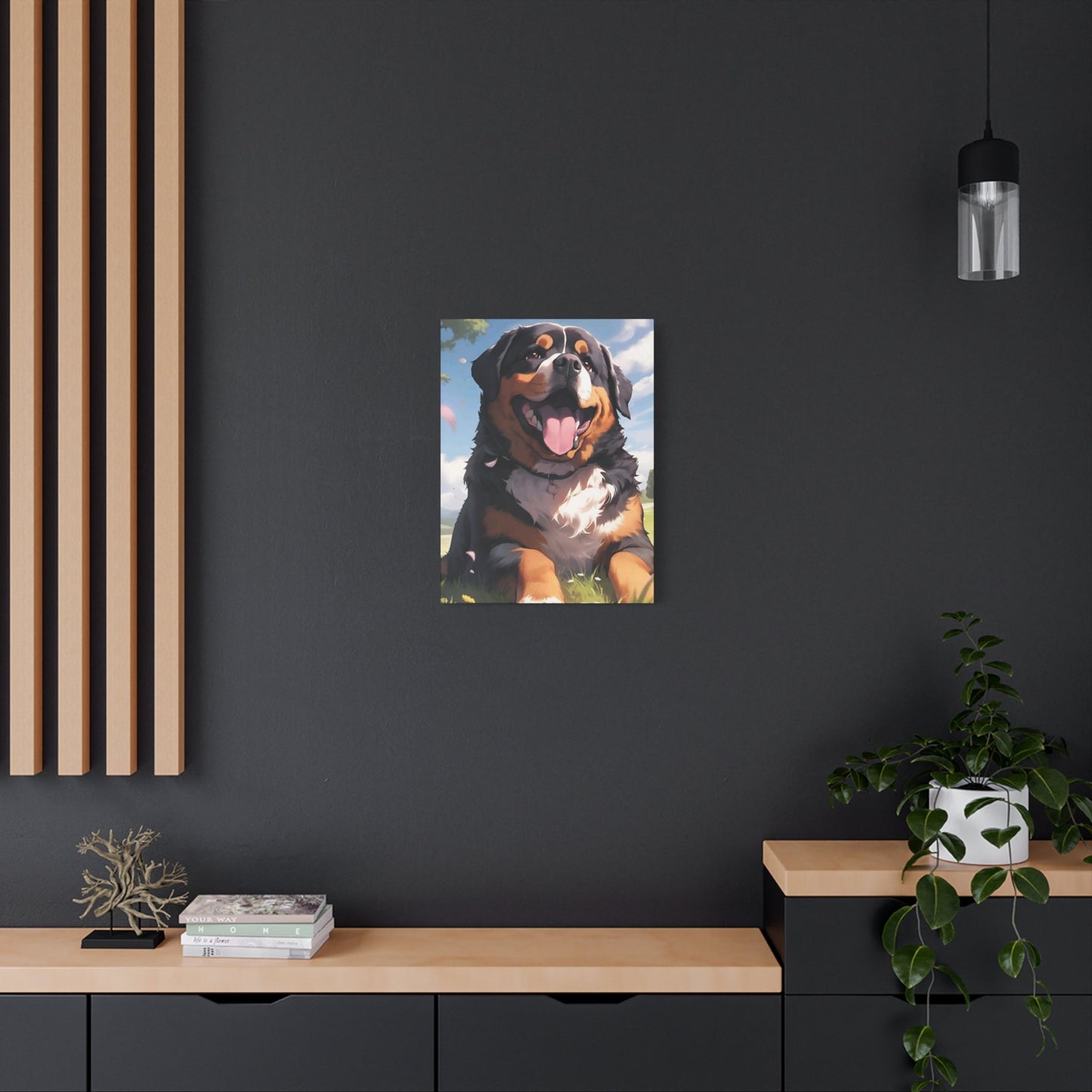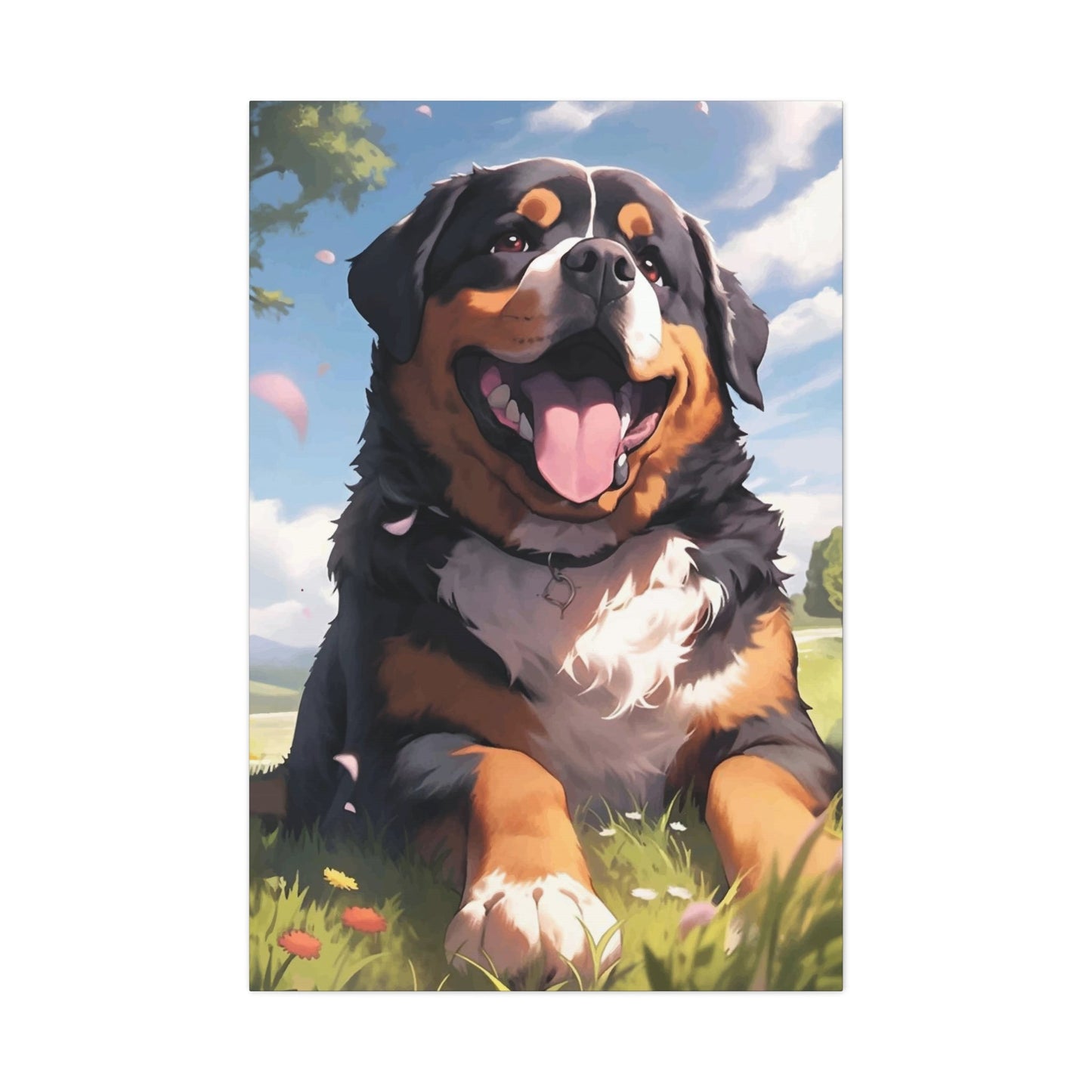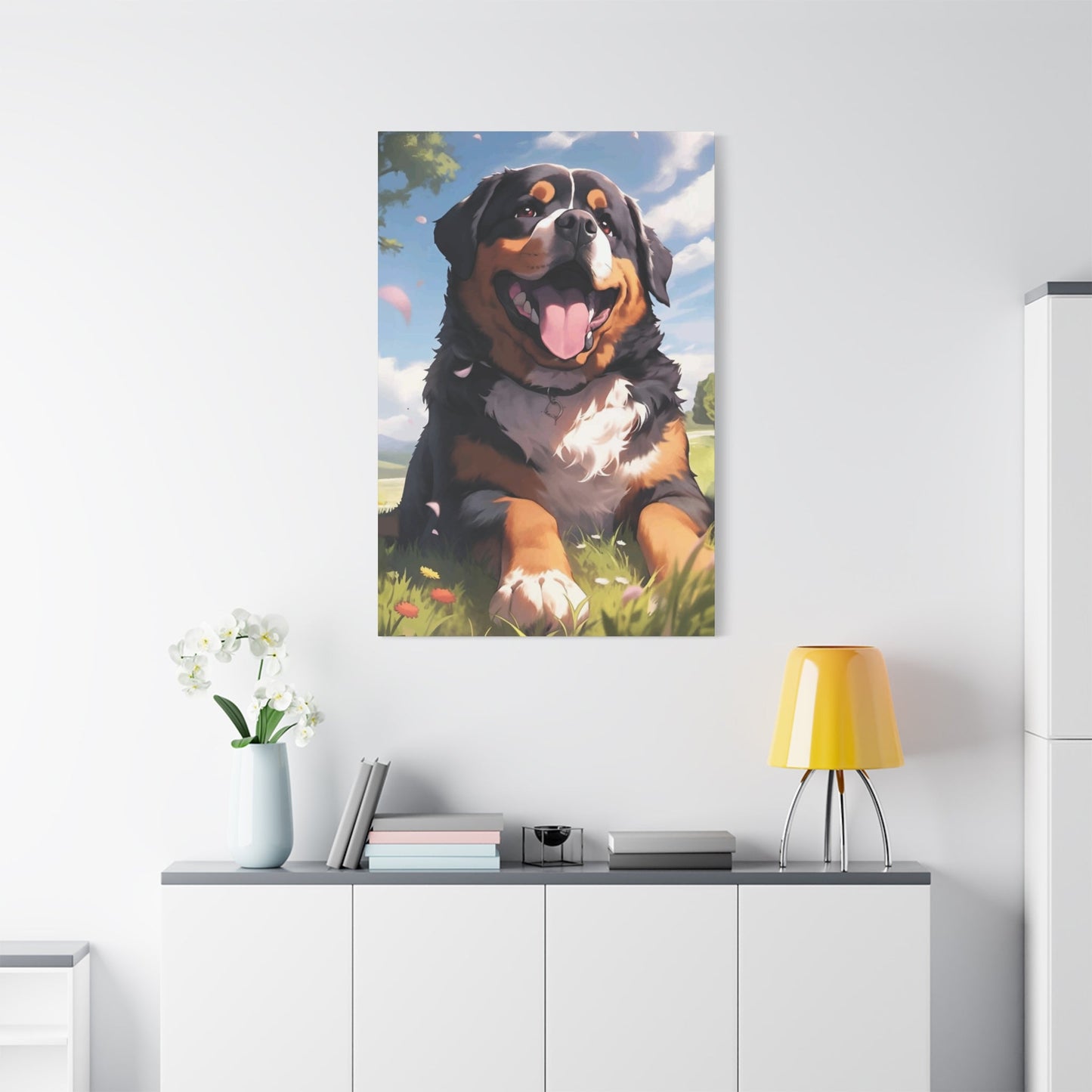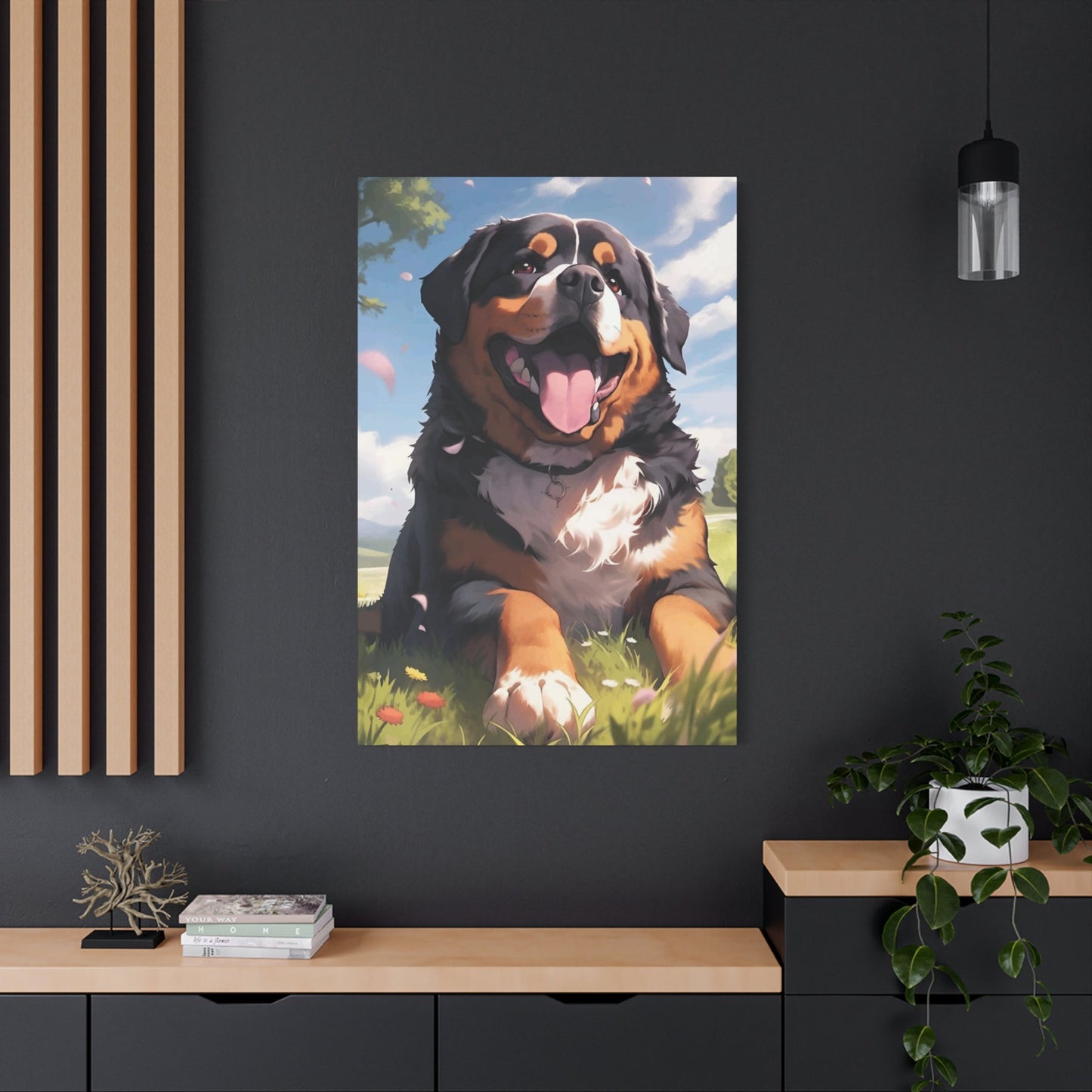Adorable Cute Dog Wall Art: Creative Ways to Add Puppy Charm to Your Home
Dogs have captured human hearts for thousands of years, and their endearing qualities make them perfect subjects for artistic expression. Creating canine-themed artwork for your walls combines the joy of artistic creation with the warmth that our four-legged companions bring into our lives. Whether you're a seasoned artist or just beginning your creative journey, there are countless ways to celebrate the charm and personality of dogs through various artistic mediums and techniques.
The appeal of dog-themed artwork goes beyond mere decoration. These pieces serve as expressions of love, memories of beloved pets, and celebrations of the unique bond between humans and their canine companions. From realistic portraits that capture every whisker to whimsical interpretations that emphasize character and emotion, dog art offers endless possibilities for personal expression and home enhancement.
This comprehensive exploration will guide you through numerous approaches to creating stunning canine artwork that will transform your walls into galleries of joy and warmth. Each technique and style offers its own unique advantages and creative opportunities, allowing you to find the perfect method that matches your skill level, available time, and artistic vision.
Simple Techniques for Painting Lovable Puppies
Creating adorable puppy paintings doesn't require years of artistic training or expensive materials. The key lies in understanding basic shapes, proportions, and the emotional elements that make puppies so irresistibly cute. Starting with simple geometric forms provides a solid foundation for building more complex and detailed artwork.
Begin your puppy painting journey by studying the basic structure of a puppy's head. Most puppy faces can be broken down into simple circles and ovals. The head forms a large circle, while the muzzle creates a smaller oval or rounded rectangle below. The ears, depending on the breed, can be represented as triangles, ovals, or curved shapes attached to the sides of the head circle.
The magic of puppy appeal lies largely in their proportions. Puppies have notably large heads in relation to their bodies, oversized eyes that seem to sparkle with innocence, and small noses that add to their vulnerable appearance. When painting, exaggerate these features slightly to enhance the cute factor. Make the eyes larger than they would appear in reality, keep the nose small and button-like, and ensure the head appears proportionally bigger than an adult dog's would.
Color selection plays a crucial role in conveying the softness and warmth associated with puppies. Even when working with darker coat colors, incorporate warm undertones to suggest the softness of puppy fur. Browns can be warmed with hints of orange or red, while blacks can include subtle purple or blue undertones to prevent them from appearing flat or harsh.
Brush technique significantly impacts the final appearance of your puppy painting. Use short, gentle strokes to suggest the texture of soft puppy fur. Avoid harsh lines and instead build up layers gradually, allowing colors to blend naturally. Pay special attention to areas where fur changes direction, such as around the ears, cheeks, and forehead, as these directional changes help define the three-dimensional form of the puppy's head.
The eyes deserve particular attention as they serve as the focal point of any successful puppy painting. Start with the basic almond or circular shape, then add depth with careful shading around the edges. The highlight in each eye should be placed consistently to suggest the direction of light. For maximum appeal, make the highlights slightly larger than they would appear in a photograph, as this enhances the bright, alert expression that makes puppies so endearing.
When working on the nose and mouth area, remember that puppies often have pink noses with a slightly wet appearance. A small highlight on the nose tip suggests moisture and adds life to the painting. The mouth line should be soft and subtle, perhaps with just a hint of the tongue visible, as this adds to the playful, innocent expression.
Background considerations are important but shouldn't compete with your puppy subject. Simple, soft backgrounds work best, perhaps with gentle color gradations or subtle textures that complement rather than distract from the main subject. Consider using colors that appear naturally in the puppy's environment or that enhance the emotional tone you want to convey.
Practice exercises can help develop your puppy-painting skills. Start with simple head studies, focusing on getting the proportions and expressions right before attempting full-body compositions. Work from reference photos initially, but don't feel bound to reproduce them exactly. Instead, use them as guides while allowing your own interpretation and style to emerge.
Streamlined Canine Artwork Concepts for Novice Artists
Minimalist approaches to dog art offer excellent starting points for artists who want to create impactful pieces without getting overwhelmed by complex details. The beauty of minimalist dog art lies in its ability to capture the essence of canine character using only essential elements, proving that sometimes less truly is more.
Line art represents one of the most accessible minimalist approaches. Using simple, confident lines, you can suggest the form and character of a dog without becoming bogged down in details like individual hairs or complex shading. Focus on the most characteristic features of your chosen breed – the curve of a Greyhound's back, the alert stance of a German Shepherd's ears, or the compact roundness of a Pug's face.
When creating line-based minimalist art, consider the emotional impact of different line qualities. Smooth, flowing lines suggest grace and calmness, while more angular lines can convey energy and alertness. The thickness of your lines also affects the overall feeling of the piece – thicker lines tend to feel more substantial and grounded, while thinner lines appear more delicate and ethereal.
Color blocking offers another effective minimalist approach. Choose two to four colors maximum and use them to define the major shapes and forms of your dog subject. This technique works particularly well for breeds with distinctive color patterns, such as Border Collies, Beagles, or Dalmatians. The key is to simplify the natural color variations into broad, flat areas that still maintain the recognizable characteristics of the breed.
Geometric minimalism transforms dogs into combinations of simple shapes while maintaining their essential character. A sitting dog might become a combination of circles, triangles, and rectangles, arranged to suggest posture and personality. This approach appeals to those who enjoy clean, modern aesthetics and can create striking wall art that complements contemporary home décor.
Negative space utilization adds sophistication to minimalist dog art. By carefully considering what you leave out, you can create pieces where the empty areas are just as important as the drawn elements. A dog's silhouette might be suggested by the shape of the background, or key features might be implied rather than explicitly drawn.
Single-color minimalism challenges artists to work within tight constraints while still creating compelling artwork. Using only black on white, or working monochromatically in shades of a single color, forces focus on composition, balance, and the interplay between positive and negative elements. These pieces often have a timeless, elegant quality that works well in various decorative contexts.
When approaching minimalist dog art, study the work of masters who excelled at capturing essence with minimal means. Look at how they used gesture, proportion, and selective detail to convey maximum meaning with minimum elements. Apply these principles to your own work, always asking what can be removed while still maintaining the emotional and visual impact you desire.
Texture can play a role even in minimalist work. Consider how different paper surfaces, canvas textures, or digital brushes can add visual interest without complicating the overall design. Sometimes a subtle texture in an otherwise flat color area can add just enough visual richness to elevate the entire piece.
The framing and presentation of minimalist dog art deserves consideration. Clean, simple frames often work best, allowing the artwork itself to be the focus. Consider how the wall color and surrounding décor will interact with your minimalist piece, as these elements become more important when the artwork itself uses restraint.
Watercolor Techniques for Endearing Dog Portraits
Watercolor painting offers unique advantages for creating charming dog portraits, particularly in its ability to capture the soft, flowing qualities of fur and the gentle, expressive nature of canine subjects. The medium's inherent characteristics – its transparency, fluidity, and tendency to blend naturally – align perfectly with the goal of creating warm, appealing dog artwork.
The wet-on-wet technique proves especially valuable for painting dog fur. By applying clean water to your paper first, then dropping in diluted color while the surface remains damp, you can achieve natural-looking fur textures that would be difficult to replicate with other mediums. This technique works particularly well for breeds with soft, flowing coats like Golden Retrievers or Cocker Spaniels.
Color mixing directly on the paper creates more vibrant and natural-looking results than pre-mixing on a palette. Allow different colors to flow together while wet, creating the subtle color variations that appear in natural fur. For example, when painting a brown dog, let burnt sienna flow into raw umber and perhaps a touch of ultramarine blue, creating depth and richness that flat, pre-mixed color cannot achieve.
Layering transparent washes builds depth and dimension in watercolor dog portraits. Start with light, diluted washes to establish the basic color and form, then gradually add darker, more concentrated layers to define shadows and create contrast. Each layer should be completely dry before applying the next to maintain control over the paint flow and color intensity.
The timing of your brush work significantly affects the final appearance of your watercolor dog portrait. Working into paint that is just beginning to dry creates soft, natural-looking edges perfect for fur textures. Paint that is too wet will spread uncontrollably, while paint that is completely dry will create hard edges that may appear unnatural for most fur applications.
Brush selection impacts the textures you can achieve. Flat brushes excel at laying down even washes and creating smooth color transitions. Round brushes with good points allow for detailed work around eyes, noses, and mouths. Old, worn brushes can be perfect for creating fur textures, as their irregular edges naturally suggest the random quality of hair.
Salt techniques can create interesting textural effects in watercolor dog paintings. Sprinkling table salt into wet paint creates starlike patterns as the salt absorbs moisture, leaving behind lighter areas. This technique can suggest the texture of certain coat types or add visual interest to background areas without competing with the main subject.
Masking fluid allows you to preserve white areas and light colors while painting darker surroundings. Apply masking fluid to areas like whiskers, light markings, or highlights in the eyes before beginning your color work. Once your painting is complete and dry, remove the masking fluid to reveal crisp white lines and shapes that would be impossible to paint around accurately.
Lifting techniques help create highlights and correct mistakes. While paint is still damp, use a clean, barely moist brush or paper towel to lift color from specific areas. This technique is perfect for creating the sparkle in a dog's eyes or the wet shine on a nose tip. For dried paint, gentle scrubbing with a damp brush can sometimes lift color, though this works better on some papers than others.
Paper selection affects every aspect of your watercolor dog portrait. Hot-pressed papers provide smooth surfaces ideal for detailed work, while cold-pressed papers offer moderate texture that helps with color blending. Rough papers create pronounced textures that can enhance certain stylistic approaches but may make detailed work more challenging.
Composition planning becomes crucial in watercolor work because the medium's fluid nature makes major changes difficult once painting begins. Sketch your composition lightly with pencil before starting, and consider making small thumbnail studies to work out your color scheme and value distribution. Plan where your lightest lights and darkest darks will be, as these will anchor your entire composition.
Developing Playful Canine Illustrations
Whimsical dog illustrations embrace creativity and imagination, moving beyond realistic representation to capture the personality, humor, and charm that make dogs such beloved companions. These artistic approaches prioritize emotional connection and visual appeal over strict accuracy, allowing for greater creative freedom and personal expression.
Character development forms the foundation of successful whimsical dog illustrations. Consider what personality traits you want to emphasize – is your dog subject playful, dignified, mischievous, or gentle? These characteristics should influence every aspect of your illustration, from posture and expression to color choices and background elements. Exaggeration becomes a valuable tool for emphasizing personality traits that might be subtle in reality.
Anthropomorphization can add charm and relatability to dog illustrations without completely abandoning their canine nature. Perhaps your dog wears a bow tie, sits at a tea table, or carries an umbrella. These human elements create narrative possibilities and emotional connections while maintaining the essential dog characteristics that make the subject recognizable and appealing.
Color psychology plays an important role in whimsical illustrations. Colors carry emotional associations that can enhance the personality you're trying to convey. Warm colors like oranges, pinks, and yellows suggest friendliness and energy, while cooler blues and purples can convey calmness or sophistication. Don't feel bound by realistic color schemes – a purple dog with green spots might perfectly capture the whimsical spirit you're seeking.
Stylistic consistency helps unify whimsical dog illustrations, especially when creating a series. Develop a personal approach to elements like line quality, color saturation, and proportional relationships. This consistency allows viewers to recognize your work and creates a cohesive feeling across multiple pieces, whether displayed together or separately.
Background elements should support and enhance your main subject without overwhelming it. Whimsical backgrounds might include floating hearts, stars, flowers, or other elements that reinforce the emotional tone of your illustration. Consider using patterns, textures, or atmospheric effects that complement your dog's personality and the overall mood you want to create.
Proportion manipulation can enhance the whimsical quality of your illustrations. Oversized heads, extra-large eyes, or tiny bodies can create appealing cartoon-like effects. These proportional choices should feel intentional and consistent within each piece, contributing to the overall stylistic approach rather than appearing accidental or uncontrolled.
Expression and gesture carry enormous weight in whimsical illustrations. A slight tilt of the head, the position of the ears, or the curve of the tail can completely change the emotional reading of your illustration. Study real dogs to understand how they communicate through body language, then exaggerate these signals to create clear, readable expressions in your artwork.
Texture and pattern can add visual interest and personality to whimsical dog illustrations. Perhaps your dog's fur shows polka dots, stripes, or swirl patterns. These decorative elements should feel integrated into the overall design rather than applied as an afterthought. Consider how patterns might follow the form of the body, emphasizing three-dimensional qualities while adding visual appeal.
Storytelling elements can elevate whimsical dog illustrations beyond simple portraits. What is your dog doing? Where are they? What objects or other characters share the scene? Even simple narrative elements can create engagement and emotional connection, encouraging viewers to spend more time with your artwork and perhaps imagine larger stories around the scene you've created.
Digital tools offer unique advantages for whimsical dog illustrations, including easy color changes, unlimited undo options, and the ability to experiment with effects and filters. However, traditional media shouldn't be overlooked – the organic irregularities of hand-drawn lines and paint application can add charm and personality that perfectly complement whimsical themes.
Spontaneous Canine Sketching Ideas
Doodling represents one of the most accessible and enjoyable ways to create dog-themed artwork. The informal, spontaneous nature of doodling removes pressure and allows creativity to flow naturally, often resulting in surprisingly charming and expressive pieces that capture the essence of canine personality through simple, direct marks.
Gesture drawing techniques translate beautifully to dog doodling. Focus on capturing the overall movement and posture of your subject with quick, confident lines rather than getting caught up in details. Dogs are naturally expressive through their body language, and gesture drawing helps capture this essential quality. Practice drawing dogs in various poses – stretching, running, sleeping, or sitting attentively.
Contour drawing exercises develop observational skills while creating appealing doodle-style artwork. Draw the outline of a dog without looking at your paper, forcing yourself to really observe the subject while creating naturally loose, expressive lines. These blind contour drawings often have a charming, child-like quality that works perfectly for casual, fun wall art.
Pattern integration can transform simple dog doodles into more sophisticated artwork. Fill the body shape with zentangle-style patterns, geometric designs, or organic textures. This approach works especially well for breeds with distinctive silhouettes like Dachshunds, Greyhounds, or Poodles. The contrast between the recognizable dog shape and intricate internal patterns creates visual interest and complexity.
Emotional expression through simplified features allows doodled dogs to convey strong personality with minimal detail. Experiment with different eye shapes, ear positions, and mouth lines to see how dramatically they can change the perceived mood and character of your doodle. Sometimes a single curved line can transform a neutral expression into one of joy, concern, or mischief.
Multiple dog compositions create opportunities for storytelling and visual rhythm in doodle form. Show dogs interacting, playing, or simply coexisting in the same visual frame. Consider how different sizes, breeds, and poses can create visual balance and narrative interest. These multi-dog doodles can fill larger wall areas effectively while maintaining the casual, approachable feeling of doodle art.
Mixed media approaches can enhance simple dog doodles without complicating the process significantly. Add watercolor washes over pen drawings, incorporate collage elements, or use colored pencils to add selective color to primarily line-based work. These additions can elevate doodles from simple sketches to finished artwork suitable for framing and display.
Series development turns individual doodles into cohesive collections. Create multiple variations on themes like "dogs with hats," "sleeping positions," or "different breeds in the same pose." Series work particularly well for doodle art because the informal, quick nature of the medium allows you to explore variations without major time investments.
Size variation within doodle work can create visual interest and hierarchy. Combine large, prominent dog figures with smaller supporting elements, or create compositions where dogs of various sizes interact. This approach helps guide the viewer's eye through the composition while maintaining the spontaneous feeling characteristic of good doodle art.
Tool experimentation can lead to exciting discoveries in dog doodling. Try different pen weights, brush pens, markers, or even unconventional drawing tools. Each tool will create different line qualities and textures, potentially inspiring new stylistic approaches. Sometimes switching tools can break you out of habitual mark-making patterns and lead to fresh, exciting results.
Speed challenges can improve your doodling skills while ensuring your work maintains the spontaneous quality that makes doodles so appealing. Set time limits for individual drawings – perhaps five minutes for a full dog figure, or thirty seconds for just a head. These constraints force you to focus on essential elements while preventing overworking that might diminish the loose, expressive quality you want to maintain.
Acrylic Techniques for Joyful Canine Paintings
Acrylic paint offers versatility and forgiveness that make it ideal for creating vibrant, joyful dog paintings. The medium's quick-drying propConclusion
Adorable cute dog wall art is a wonderful way to infuse your home with warmth, joy, and irresistible puppy charm. Whether you’re a dog lover or simply appreciate playful, heartwarming décor, dog-themed art brings a sense of companionship and happiness that brightens any space. From whimsical illustrations and minimalist line drawings to vibrant, detailed paintings, there are countless creative ways to showcase man’s best friend on your walls.
Incorporating cute dog wall art allows you to personalize your home with pieces that evoke love, loyalty, and fun. These artworks fit seamlessly into a variety of décor styles—whether you prefer cozy farmhouse vibes, modern minimalism, or eclectic accents—and can be tailored to reflect your favorite breeds or playful dog personalities.
Creative techniques like watercolor washes, mixed media collages, or even DIY canvas projects make it easy for artists of all skill levels to join in the fun. Plus, dog wall art often sparks conversation, nostalgia, and smiles, making your space feel welcoming and full of life.
Ultimately, adorable dog wall art is more than just decoration—it’s a celebration of the special bond we share with our furry friends. Adding these charming pieces to your home creates an environment filled with love, energy, and heartfelt moments, making every day a little brighter and more joyful.erties allow for layering and detail work, while its opacity enables both subtle color transitions and bold, graphic statements. Understanding acrylic's unique characteristics helps artists maximize its potential for canine subjects.
Color mixing with acrylics requires understanding how the paint behaves differently from oils or watercolors. Acrylics dry quickly, so work with small amounts of mixed color and remix as needed rather than trying to maintain large quantities of custom colors. For dog fur, this means mixing colors for specific areas and being prepared to remix when moving to adjacent sections that require similar but slightly different hues.
Texture creation becomes particularly important when painting dog fur with acrylics. The paint's body and opacity allow for various texturing techniques that can convincingly suggest different coat types. Use dry brush techniques for short, coarse fur by loading a brush with thick paint and dragging it lightly across the surface. For longer, flowing fur, use longer brush strokes with moderately diluted paint.
Layering strategies in acrylic painting help build depth and richness in dog portraits. Start with thin underpainting to establish basic colors and values, then build up with increasingly opaque layers. Each layer can serve a specific purpose – perhaps one for base color, another for shadows, and a third for highlights and fine details. Allow each layer to dry completely before applying the next.
Wet blending techniques require working quickly with acrylics due to their fast-drying nature. To achieve smooth color transitions, such as those needed for subtle fur color changes, work with slightly diluted paint and blend while both colors are still wet. Adding a slow-drying medium can extend your working time for complex blending areas.
Highlight application in acrylic dog paintings can create dramatic impact and bring your subject to life. Use thick, opaque paint for the brightest highlights, applying them last after all other colors are in place. Pay particular attention to highlights in the eyes, on the nose, and where light catches the fur texture. These bright accents create focal points and enhance the three-dimensional appearance of your painting.
Impasto techniques, where paint is applied thickly enough to show brush marks, can add energy and texture to dog paintings. This approach works particularly well for breeds with coarse or curly fur, where the physical texture of the paint application can reinforce the visual texture being depicted. Build up paint gradually, allowing lower layers to show through for complexity.
Background considerations become important when the main subject is painted with attention to detail and texture. Simpler backgrounds often work better with detailed dog subjects, preventing visual competition. Consider using color temperatures that complement your dog – cool backgrounds can make warm-colored dogs appear to advance, while warm backgrounds can provide cozy, intimate feelings.
Glazing techniques involve applying thin, transparent layers of color over existing paint to modify color temperature, intensity, or value. This approach can be particularly useful for adjusting the overall color harmony of a dog painting or for creating atmospheric effects. Mix acrylic glazes with appropriate mediums to maintain transparency and proper flow characteristics.
Detail work with acrylics requires understanding brush selection and paint consistency. Fine details like individual whiskers or intricate eye patterns require good-quality, small brushes and paint that flows well without being too thin. Practice control exercises to develop steady hand control for fine line work, and consider using a mahl stick or other support for very detailed passages.
Color temperature relationships play crucial roles in creating convincing and appealing dog paintings. Warm and cool versions of similar colors can help separate foreground from background, create depth, and enhance the three-dimensional appearance of your subject. Study how light affects color temperature on actual dogs and incorporate these observations into your paintings.
Mastering Expressive Puppy Eyes in Artwork
The eyes serve as the emotional center of any successful dog portrait, conveying personality, mood, and the special connection between dogs and humans. Mastering the depiction of puppy eyes requires understanding both their physical structure and their emotional significance, combining technical skill with emotional sensitivity.
Anatomical understanding provides the foundation for convincing eye portrayal. Dog eyes vary in shape, size, and position depending on breed, but certain principles apply universally. The eyeball is a sphere, even though only a portion is visible. This understanding helps in placing highlights and shadows correctly to suggest the three-dimensional form beneath the visible surface.
Proportion relationships between the eye and surrounding features significantly impact the perceived age and appeal of your subject. Puppy eyes appear larger relative to head size than adult dog eyes, and this characteristic contributes to their appealing appearance. When aiming for maximum cuteness factor, slightly exaggerate eye size while maintaining realistic proportions for other facial features.
Light and shadow patterns on eyes follow predictable rules based on the spherical form of the eyeball and the positioning of light sources. The upper eyelid typically casts a shadow on the upper portion of the eyeball, while the lower portion receives more light. Understanding these patterns helps create convincing three-dimensional eyes even in stylized artwork.
Highlight placement determines the apparent direction of light and significantly affects the life and sparkle in painted eyes. Multiple highlights can suggest complex lighting situations, while single highlights create more dramatic, focused effects. The size and intensity of highlights also affect the perceived moisture and alertness of the eyes – slightly larger, brighter highlights often enhance appeal.
Color considerations for dog eyes extend beyond the iris color to include subtle variations in hue and value throughout the visible eye structure. Even dark brown eyes contain warm and cool variations, reflections of surrounding colors, and transparency effects where light passes through the iris. Observing real eyes carefully reveals unexpected color complexity.
Emotional expression through eye shape and positioning allows artists to convey specific moods and personalities. The relationship between the eye opening, eyelid position, and surrounding facial muscles creates readable emotional states. Slight variations in these relationships can shift expression from alert to sleepy, happy to concerned, or playful to serious.
Technical approaches vary depending on the medium being used, but certain principles apply across different materials. Building up colors gradually allows for subtle variations and corrections. Working from general shapes toward specific details helps maintain proper proportions. Saving the brightest highlights for final application creates maximum impact and prevents them from becoming muddy.
Reference study helps develop understanding of how eyes appear under different lighting conditions and emotional states. Collect reference photos showing various eye expressions, lighting angles, and different breeds. Study how professional artists have handled eyes in their work, analyzing their techniques and decision-making processes.
Common challenges in painting dog eyes include maintaining symmetry while allowing for natural variation, creating convincing highlights that don't appear painted-on, and balancing detail with overall composition needs. Each challenge has solutions that can be developed through practice and careful observation of successful examples.
Stylistic adaptation allows eye painting techniques to work across different artistic approaches. Realistic techniques can be simplified for cartoon-style work, while impressionistic approaches might emphasize color and light over precise detail. The key is maintaining emotional connection regardless of the level of realism or abstraction employed.
Creating Striking Canine Silhouettes for Decoration
Silhouette art offers a timeless, elegant approach to dog-themed wall decoration that works across various decorative styles and color schemes. The stark contrast and simplified forms of silhouette art create immediate visual impact while maintaining the essential character and recognition factors that make specific breeds identifiable even in reduced form.
Breed selection becomes crucial when creating silhouette art, as some breeds translate more successfully to silhouette form than others. Dogs with distinctive profiles – such as Greyhounds, German Shepherds, or Afghan Hounds – remain easily recognizable in silhouette, while breeds with less distinctive profiles might become generic-looking when reduced to simple shapes. Consider the characteristic features that make each breed unique and ensure these translate well to silhouette form.
Pose selection significantly affects the success of silhouette artwork. Profile views generally work better than front-facing poses because they show more characteristic breed features and create clearer, more readable shapes. Action poses can add energy and interest, but they should be chosen carefully to ensure the silhouette remains readable and the action clearly apparent from the reduced visual information.
Composition strategies for silhouette art must work with high contrast and minimal detail. Consider how the silhouette shape will interact with its background and surrounding elements. Multiple silhouettes can create rhythmic patterns or tell visual stories, while single silhouettes might serve as focal points in larger compositions. The relationship between positive and negative spaces becomes particularly important.
Technical approaches to creating silhouettes vary depending on whether you're working traditionally or digitally. Traditional methods might involve cutting paper shapes, painting solid black forms, or using stencils. Digital approaches offer easy editing capabilities and perfect edge quality. Consider which method best suits your skill level, available tools, and intended final presentation format.
Detail decisions must be made carefully in silhouette work. While the overall form is simplified, small details like ear shape, tail position, or collar elements can add character and recognition factors without breaking the essential silhouette concept. These details should enhance rather than complicate the overall shape, maintaining the clean, strong impact that makes silhouettes effective.
Background treatment affects how silhouette art functions decoratively. High contrast backgrounds make silhouettes pop dramatically, while lower contrast approaches create subtler, more integrated effects. Consider the wall color and surrounding décor where your silhouette art will be displayed, ensuring the contrast level works effectively in its intended environment.
Scale considerations become important for wall art applications. Larger silhouettes create bold, dramatic statements, while smaller ones might work better in groupings or as parts of larger compositions. Consider viewing distance and surrounding elements when determining appropriate sizing for your silhouette artwork.
Material choices affect both the appearance and longevity of silhouette art. Paper works well for temporary or experimental pieces, while more durable materials like vinyl, wood, or metal might be appropriate for permanent installations. Consider how different materials interact with light – some create hard-edged shadows while others might have more organic, soft-edged effects.
Cultural and historical references can add depth to contemporary silhouette art. The traditional association of silhouettes with portraiture and commemoration can lend emotional weight to dog silhouettes, particularly when used to remember beloved pets. Understanding these associations can help guide decisions about presentation and framing.
Series development works particularly well with silhouette art because the unified visual treatment naturally creates cohesion across multiple pieces. Series might explore different breeds, various poses of the same dog, or different activities and settings. The simplified nature of silhouettes makes creating multiple related pieces manageable while ensuring visual consistency.
Constructing Canine Art Using Basic Geometric Forms
Geometric approaches to dog art offer structured methods for breaking down complex forms into manageable components while creating artwork with strong compositional foundations. This approach particularly benefits beginning artists by providing clear construction methods and can also create striking, modern-looking finished pieces that work well in contemporary decorative settings.
Shape analysis forms the foundation of geometric dog construction. Most dog forms can be analyzed as combinations of basic shapes – circles for heads and bodies, triangles for ears, rectangles for legs and muzzles. Understanding these underlying geometric relationships helps artists approach seemingly complex subjects with confidence and systematic methods.
Construction sequence affects both the accuracy and efficiency of geometric dog drawing. Typically, starting with the largest shapes and progressively adding smaller details works best. Begin with basic body and head shapes, then add legs, ears, and tail before moving to facial features and surface details. This approach maintains proper proportions and prevents getting lost in premature detail work.
Proportional relationships between geometric components determine whether your constructed dog appears believable and appealing. Study how different breeds relate to basic geometric proportions – some dogs have square-proportioned bodies, others are clearly rectangular. Head size relative to body size varies significantly between breeds and can be exaggerated for stylistic effect.
Angular versus curved approaches within geometric construction create different stylistic effects. Purely angular construction creates a more graphic, modern appearance, while incorporating curves softens the effect and can appear more natural. Consider mixing angular and curved elements to create visual interest and prevent the geometric approach from appearing too rigid or mechanical.
Overlapping and intersection handling requires decisions about how geometric shapes relate to each other spatially. Some geometric dog art maintains clear separation between shapes, creating almost puzzle-like effects, while other approaches blend geometric construction with more naturalistic form modeling. These choices significantly affect the final artistic style and visual impact.
Color application in geometric dog art can emphasize the underlying structure or work to minimize it. Flat, distinct colors for each geometric component emphasize the construction method and create bold, graphic results. Graduated colors and subtle transitions can make geometric construction less obvious while maintaining the underlying structural benefits.
Detail integration presents challenges when working with geometric construction methods. Features like eyes, noses, and fur textures need to be incorporated in ways that complement rather than fight the geometric foundation. Consider how details can be simplified or stylized to maintain consistency with the overall geometric approach.
Brand and style development can emerge from geometric construction approaches, particularly when consistency is maintained across multiple pieces. Develop personal approaches to common shapes, color relationships, and detail handling that create recognizable artistic signatures while working within geometric frameworks.
Advanced geometric techniques might incorporate more complex mathematical relationships like golden ratios, modular grids, or systematic color progressions. These approaches can create sophisticated, harmonious compositions that maintain the accessibility of geometric construction while adding layers of visual sophistication.
Digital advantages become apparent when working with geometric dog construction, as software tools excel at creating precise shapes, maintaining consistent proportions, and enabling easy experimentation with color and arrangement options. However, hand-drawn geometric work has its own appeal, with natural irregularities adding character and warmth to otherwise precise constructions.
Illustrating Dogs with Oversized Features and Cheerful Expressions
Exaggerated proportions and joyful expressions tap into fundamental psychological responses that make certain visual characteristics universally appealing. By understanding and manipulating these elements, artists can create dog artwork that generates immediate positive emotional responses and works effectively as uplifting wall art.
Feature exaggeration principles follow patterns established in character design and animation. Larger eyes, proportionally bigger heads, and smaller bodies create "cute" responses that appear to be hardwired into human perception. These same principles that make human babies appealing also work for puppy and dog representations, creating artwork that feels immediately endearing.
Eye size and positioning have enormous impact on perceived appeal and expression. Making eyes significantly larger than realistic proportions creates instant appeal, while eye positioning affects personality perception. Eyes placed slightly closer together can suggest concentration or intensity, while wider-spaced eyes might appear more relaxed or friendly. Experiment with these variations to achieve desired emotional effects.
Facial expression mechanics involve understanding how different features combine to create readable emotions. Raised "eyebrows" (suggested through fur patterns or wrinkles) create alert, interested expressions. Tongue visibility suggests friendliness and relaxation. Ear position communicates emotional states – forward ears appear attentive, while relaxed ears suggest contentment.
Body language translation becomes important even when focusing primarily on facial features. A tilted head suggests curiosity, while straight-on positioning appears more confident. Even when creating primarily head-focused artwork, consider how implied body position affects overall expression and emotional reading.
Color psychology supports expression goals through strategic color choices. Warm colors generally support happy, energetic expressions, while cooler colors might suggest calm or dignified moods. Don't feel constrained by realistic color schemes – a pink or purple dog might perfectly support the joyful, fantastical mood you want to create.
Stylistic consistency helps unify artwork featuring exaggerated features. Develop approaches to common elements like eye shape, ear style, and facial structure that can be applied across different pieces. This consistency creates visual cohesion when displaying multiple pieces together and helps establish recognizable artistic style.
Background integration should support rather than compete with your expressively exaggerated subjects. Consider backgrounds that enhance the emotional tone – perhaps hearts, stars, or flowers for joyful pieces, or simple color gradations that don't distract from facial expressions. The background should reinforce rather than contradict the mood established by your main subject.
Age implications come with exaggerated features, as many exaggeration techniques naturally create more youthful appearances. If you want to suggest adult dogs while maintaining appeal through exaggeration, consider which features to modify and which to keep closer to realistic proportions. Perhaps exaggerate eyes and expression while maintaining more realistic body proportions.
Technical execution must support the emotional goals of exaggerated artwork. Smooth color transitions and clean line work generally support positive emotional responses, while rough or sketchy techniques might suggest different moods. Consider how your technical approach reinforces or contradicts the emotional content you're trying to communicate.
Appeal sustainability considers whether exaggerated artwork will maintain its positive impact over time. While extreme exaggeration might create immediate impact, more moderate approaches might have longer-lasting appeal. Consider the intended use and viewing context when determining appropriate levels of exaggeration and emotional intensity.
Conclusion
Adorable cute dog wall art is a wonderful way to infuse your home with warmth, joy, and irresistible puppy charm. Whether you’re a dog lover or simply appreciate playful, heartwarming décor, dog-themed art brings a sense of companionship and happiness that brightens any space. From whimsical illustrations and minimalist line drawings to vibrant, detailed paintings, there are countless creative ways to showcase man’s best friend on your walls.
Incorporating cute dog wall art allows you to personalize your home with pieces that evoke love, loyalty, and fun. These artworks fit seamlessly into a variety of décor styles—whether you prefer cozy farmhouse vibes, modern minimalism, or eclectic accents—and can be tailored to reflect your favorite breeds or playful dog personalities.
Creative techniques like watercolor washes, mixed media collages, or even DIY canvas projects make it easy for artists of all skill levels to join in the fun. Plus, dog wall art often sparks conversation, nostalgia, and smiles, making your space feel welcoming and full of life.
Ultimately, adorable dog wall art is more than just decoration—it’s a celebration of the special bond we share with our furry friends. Adding these charming pieces to your home creates an environment filled with love, energy, and heartfelt moments, making every day a little brighter and more joyful.













